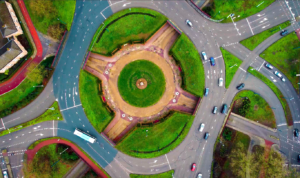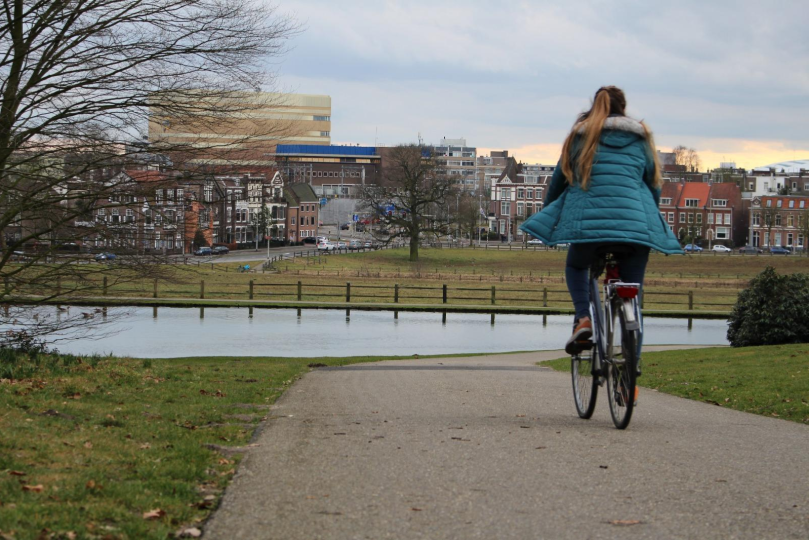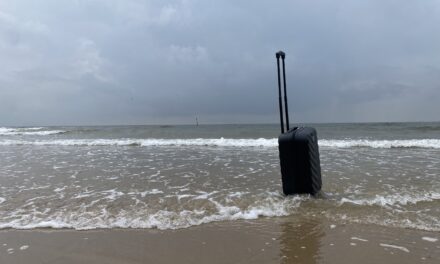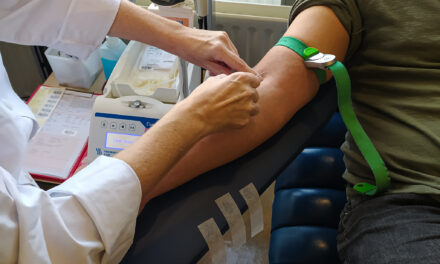The Netherlands have had bike routes and infrastructure for decades, the country serves as an example of what any city has the potential to be with the right funding, commitment, and legislation.
Amsterdam is a tourist destination in the Netherlands with a population density comparable to the city of Los Angeles. Anyone comparing the two cities would be blind to not mention the labyrinth of bike paths throughout the Dutch city. Amsterdam is a perfect example of the typical Dutch city, an urban setting optimized according to the journey of the pedestrian or cyclist.
The Netherlands provides a glimpse into a potential future that includes safe mobility for every urbanite. Every Dutch city is intertwined with bike roads, complete with crossing signals and stop lights, and it’s been this way for a long time.
“When I was about 8 years old, we used to bike about 60 kilometers to the Dolfinarium.” Hanry ter Hall, a Dutch native, says. “I taught my kids to bike, and I gave my grandchildren a bike. Being able to bike, it’s necessary here.”
The 50-year-old bike route system has been constantly evolving over the years, and bit by bit cities in the Netherlands are adapted to suit the needs of the pedestrian. High parking tariffs, fewer car-friendly streets, and fewer parking spots make having a car more of a chore than a luxury, as opposed to a necessity the way it is in many parts of the United States.
Cycle of Change

Photo: A. Piccioni, drone shot over Arnhem
The Netherlands’ bike routes have developed on a massive scale, with plans for the city of Utrecht to expand their bike routes to have more options based on a rider’s destination or personal implications. The Gemeente Utrecht, the municipality of Utrecht, has been steady with the development of the bike routes used in the city. The municipality of Utrecht highlights the trend of the increase in cycling and the insignificant increase in car and automotive transportation in the introduction of their newest project, the Mobility Plan 2040 for the city of Utrecht.
“A big part of our work is focusing on a good standard for the network of bicycle facilities,” explains Marijn Kik, mobility policy advisor in the Municipality of Utrecht. “With lower parking standards, we try to discourage car use, [and] make for a less car-oriented lifestyle combined with a wide network for cycling and walking.”
Their extensive mobility strategy from 2016 planned to add tram and public transportation lines that connect more residents to the desired destinations. In their new plan for 2040, they plan to build on the current public transportation system, remove parking spaces to make more room for nature parks and bicycle parking, and change the speed limit for automobiles to 30km an hour within the city.
As with any positive addition, there are always setbacks. The development of these bike lanes over the years have also revealed the troubles they can cause. Just like on the car highways, bikes can get into traffic jams too. No road is immune to rush-hour commuter traffic, not even the bike lanes.
Complaints of 20 km/hour scooters and mopeds racing past cyclists enjoying a leisurely ride are the subjects of many conversations, and with reported complaints, rules and laws are passed to curb them. In response to an increase in scooter accidents and complaint submissions, the city of Amsterdam banned scooters and mopeds on the bike routes, once again retaining the safety for cyclists. Not every city has the same adamance toward making these kinds of rules, other cities are still catching up to Amsterdam.
Old Rules, New Opportunities
This bike infrastructure, which is essentially a built-in part of the country at this point, creates opportunities for new kinds of businesses to form and in turn new visions for the future. Young entrepreneurs Chingiskhan Kazakstan and Max Shallow have a vision of a future where cars are practically obsolete, and everyone has access to an easily accessible and affordable mode of transportation that is safe to use. They hope to make this vision a reality, and contribute to the realization of this vision with their E-Mobility company “Bondi”. They are pushing the idea that smaller mobility solutions (as opposed to automobiles) are more efficient in terms of time but especially in terms of sustainability.
Paving the Way to a Bike-Friendly Future
Cities like Copenhagen, Portland, Montreal, and even the population-dense city of Tokyo have their own biking networks too, which only goes to show biking infrastructure is possible anywhere.
Nonetheless, the way the Netherlands has created the infrastructure for its cities is an aspect of the country that strikes awe and admiration in foreigners and makes the country known around the world as the country with the bikes. These bike paths have been around since the 70s, and have paved the way to making the country the place that it is today. When it comes to urban mobility, the Dutch can take it for granted.




